How to Grow a Baby Food Garden
Get the tips you need to grow a Baby food garden for homemade baby food right from your backyard vegetable garden. This a great way to ensure your baby is eating the very best foods she can.
I love themed gardens and they are a great part of our gardening 101 guide of resources. Growing a garden that centers around a theme helps you to grow the foods you will use and fill a pantry with goodness to enjoy year round.
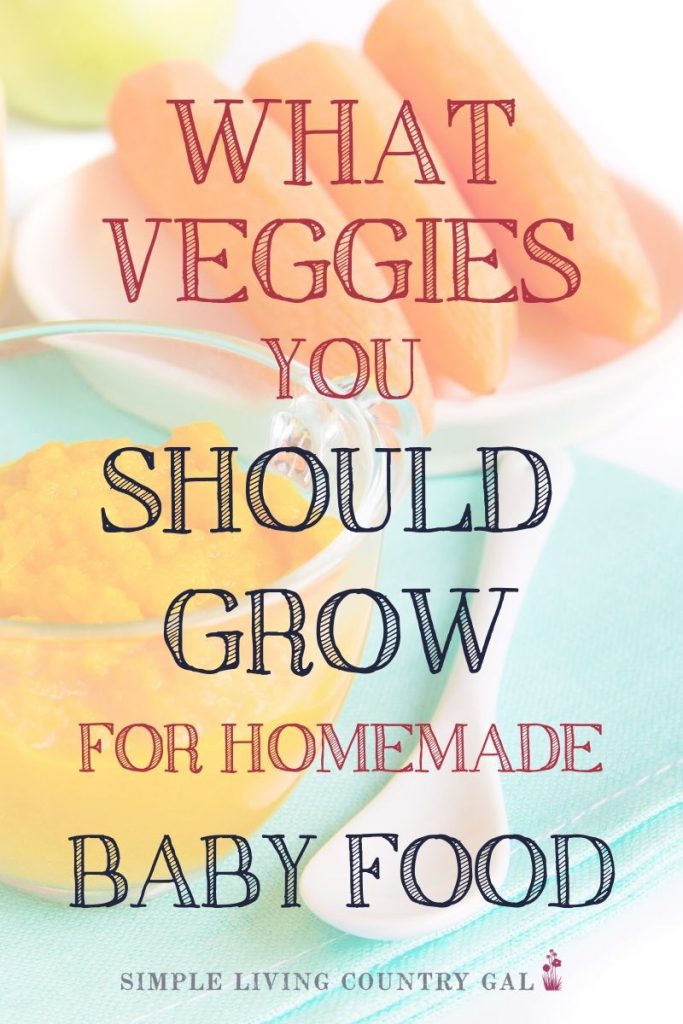
Providing fresh produce for your baby is something all moms want to do. After all, fresh veggies, grown in your own garden and pureed in your own kitchen, make you feel good about what you’re feeding your baby.
By choosing to make your own baby food, you will have complete control over all the ingredients found inside the jar. This allows you to make the best baby food for your children and allows you to give focus to any food allergies as well.
But as a busy mom, who has time for that? And if you’re a city-dweller or live in a suburban area, where space is limited for a large backyard garden?
Not to worry, you can manage a healthy veggie baby food garden with just a little time and very little space.
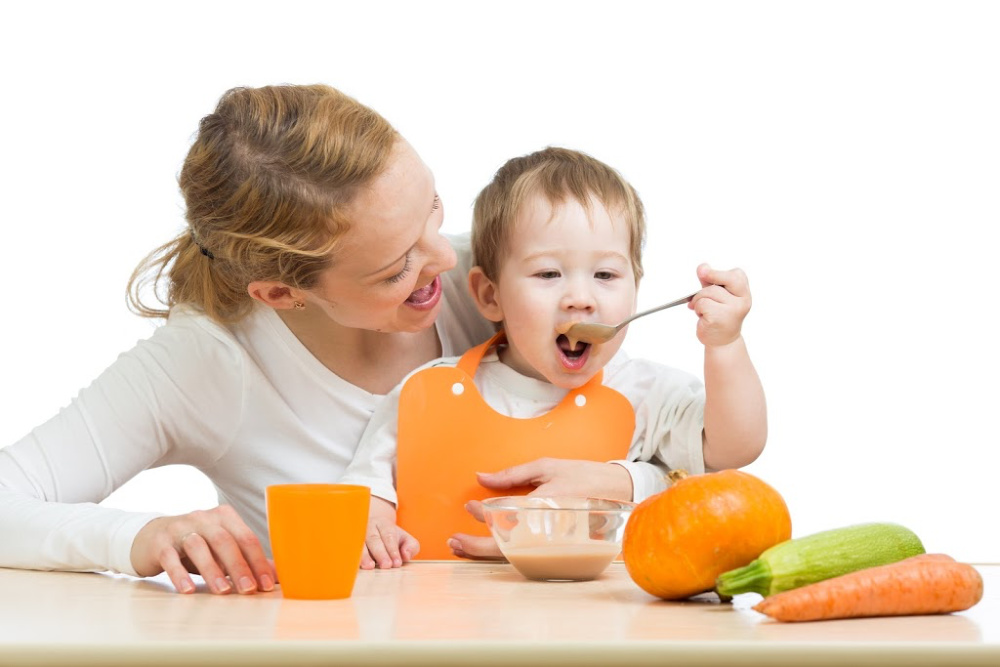
It may surprise you to know that many vegetables can be planted, and grow very nicely, in raised bed and container gardens. In fact, urban gardening is rising in popularity and that means there is so much more opportunity to grow amazing food in your own backyard.
What vegetables can be grown in a small space?
You can grow many things in small spaces, such as containers or raised beds. The top veggies to grow are:
- Carrots
- Peas
- Beans
- Sweet Potatoes
- Corn
- Lettuce
- Tomatoes
- Summer Squash
When it comes to gardening, all you need is a sunny spot, sturdy containers with drainage, and good-quality soil. The best part is container gardens, and raised bed gardens require significantly less work than a full garden plot. Let’s take a look at what you need.
Gardening Tools to Make Gardening Easier
Gardening Hand Tool Set 3 Pack – MDSXO Heavy Duty Gardening Kit with Non-Slip Soft Ergonomic Handle, Great Garden Gift for Women Men[Stainless Steel]![Gardening Hand Tool Set 3 Pack - MDSXO Heavy Duty Gardening Kit with Non-Slip Soft Ergonomic Handle, Great Garden Gift for Women Men[Stainless Steel]](https://easyproductdisplays.com/wp-content/uploads/2017/07/buy6.gif)



Containers or Raised Beds for a Baby Food Garden
Not all gardens need to be grown in a plot of land, nor do you need to start digging up a corner in your backyard. You can grow just what you need right on your back porch using containers of all kinds.
A few of the benefits of these types of garden containers include:
- Fewer weeds as there’s not enough room for them to thrive and they’re easier to pull.
- Easier for pest control. You can use specialized fabrics and covers to help keep pests out.
- Customize soil needs to the plants. If the plants you’re growing require specialized soil, it’s easy to mix it yourself in the container.
- Easier on the back as raised beds and containers don’t require you to spend as much time on the ground.
- Earlier planting because the smaller beds allow the soil to warm up faster in the spring compared to in-ground gardens.
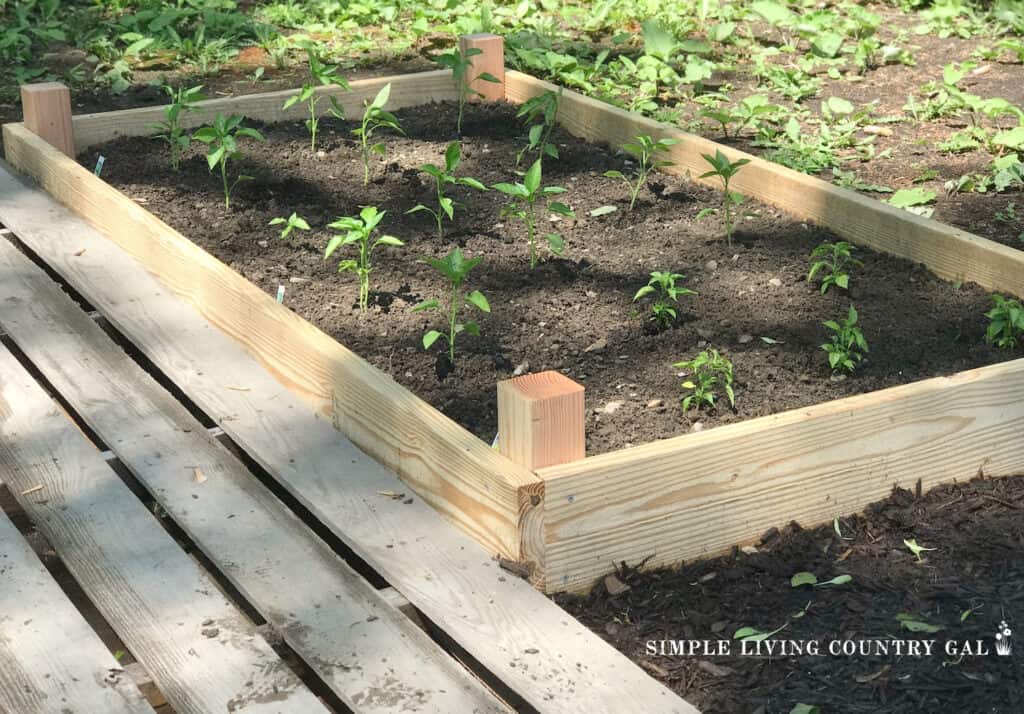
If you have a little bit of a yard, you may want to plant a raised bed garden instead.
This is essentially a wooden box that sits on top of your yard, is filled with soil, and is used for planting. It’s not very deep so you’ll want to grow veggies that grow above ground, like lettuce and tomatoes, and avoid ones that grow below the soil, like potatoes.
Raised Bed options:
ENJOYBASICS Raised Garden Bed Kit, Galvanized Raised Planter 4x2x1ft Box Outdoor for Vegetables, Large Bottomless Metal Raised Bed for Gardening, Herb, Growing Fruits, Flower

A raised bed allows you to garden anywhere in your yard where you get good sunlight without worrying about the soil in the ground. In suburban areas especially, soil can be rocky, or made up of clay making it hard for plants to grow.
You may want to consider a container garden if you don’t have a yard or the sun hits your yard in various places. Sturdy containers allow you to plant a little deeper, especially in taller containers, and you can move them around to ensure they get good light.
Container Garden Resources:
- Easy Container Gardening Tips for Beginners
- How to Grow Tomatoes in Containers
- How to Grow Potatoes in Containers
Choose plastic pots if possible, as they retain moisture better than clay pots. If you prefer the look of clay pots, simply buy one larger than you need and slip a plastic pot inside it for planting.
Black pots tend to absorb more heat, so avoid them whenever possible. And adding about an inch of coarse gravel to the bottom of a pot will improve the drainage and keep your plants from getting too much water at once. Try pots that have watering access at the base for even watering. Leftover containers from the nursery are great to reuse for your new container garden.
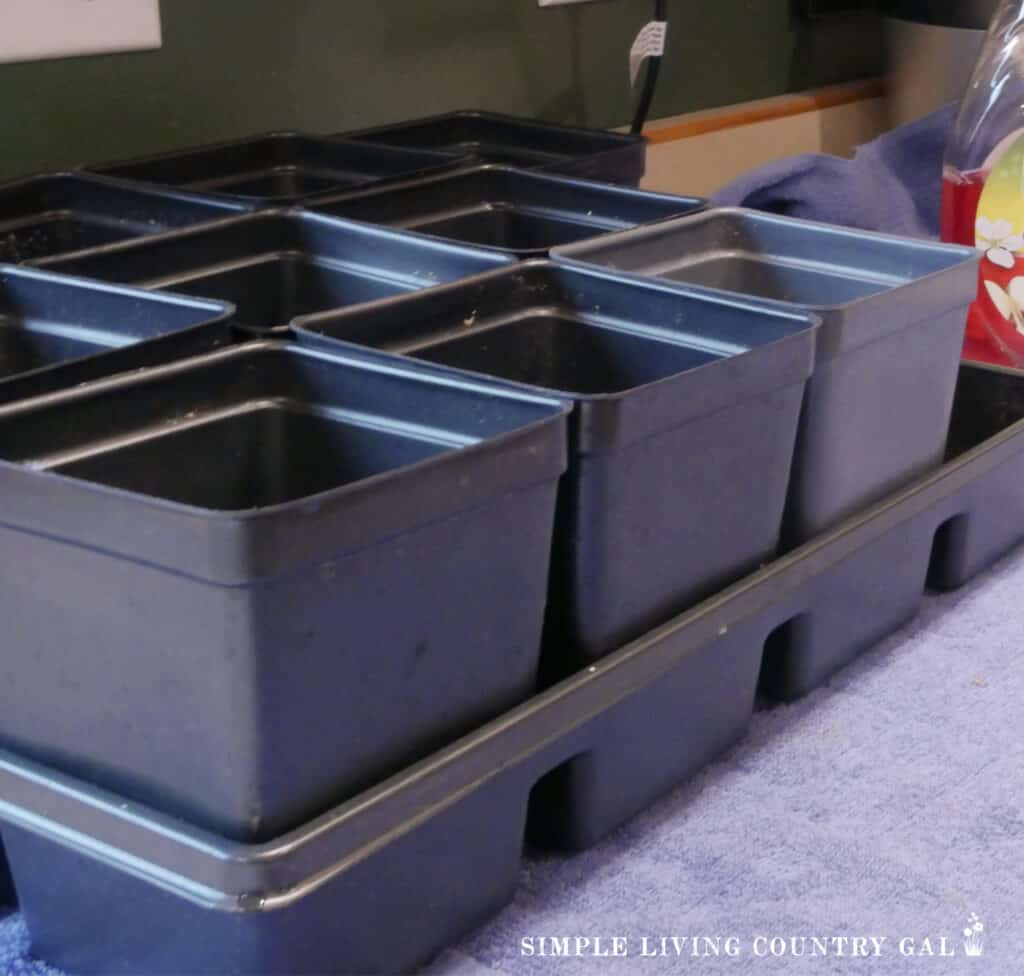
READ: THE BEST CONTAINERS FOR A PATIO GARDEN
Do keep in mind that plants in containers, because they are smaller, will most likely need watering twice a day.
There are unique planters available for underground vegetables like potatoes and carrots that make them easy to harvest. These containers have a small “door” on the side that you can open to inspect or remove your vegetables from the soil without disrupting the garden or any vegetables that aren’t ready to harvest yet.
Hanging baskets are another option to optimize space. Cherry tomatoes, strawberries, and herbs do well in hanging baskets and the baskets make them easy to harvest.
If your space is limited, like a small balcony or deck, a variety of planters might work well. Containers for vegetables that need more space, hanging baskets for herbs, and a window box for planting lettuce.
Location and Size for Your Baby Food Garden
Raised beds are easy to make yourself or can be sourced from a variety of online gardening sites. Just make sure they have good irrigation for excess water to drain. They can be set up directly onto the ground or even on a concrete patio, though positioning raised beds on a deck is not recommended.
Be aware that the excess weight and water run-off can cause structural damage. Deeper beds are preferred for vegetables, 10-12” deep, but do keep in mind that the bigger the bed, the more soil you’ll need.
If you place raised beds in the yard, line them with cloth or chicken wire to prevent burrowing animals from gaining access.
One mistake many people make with raised beds is making them (or buying them) too big. Remember that with raised beds, you won’t be able to walk through them and around the plants so make sure that you can reach the middle of the bed from every side.
When planting a container garden, remember that large plants need a lot of space as their roots need room to grow. Also, small pots usually can’t store enough water for the plant to get through hot summer days. Overall, large pots, baskets, boxes, or half-barrels are best as long as they have drainage holes in the bottom.
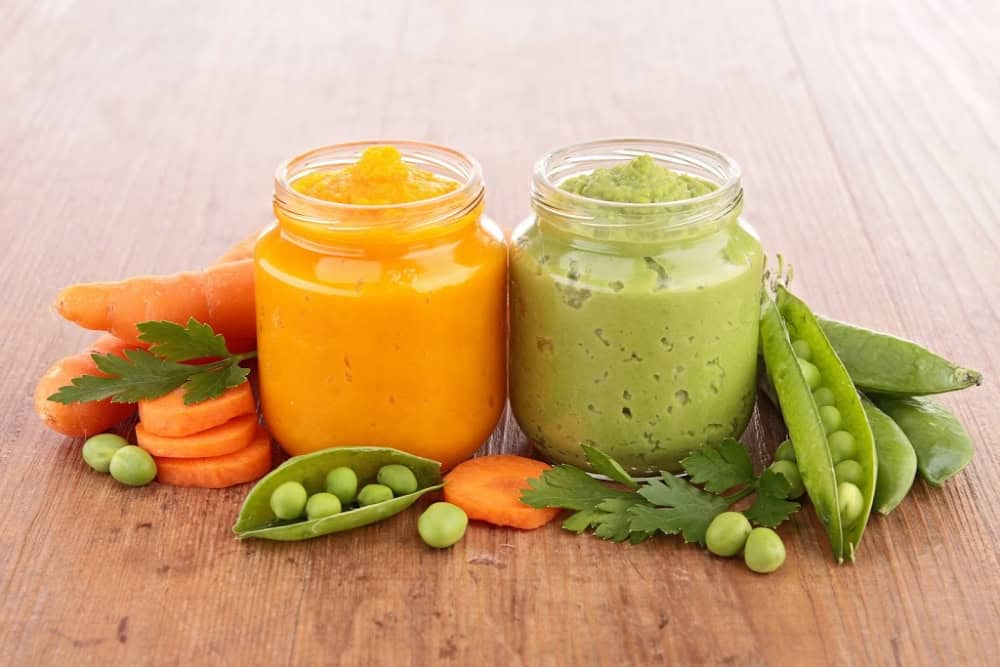
For most vegetables, they should be able to receive about 7-8 hours of sunlight every day so plan your garden location accordingly. And, because they’ll need to be watered regularly, make sure you have easy access to a hose.
Keep the depth of your planter in mind when choosing one for specific vegetables. Many vegetables have minimum soil depth requirements for healthy growth:
- 4-5” depth is best for lettuces and most herbs
- 6-7” depth is best for most beans and peas
- 8-9” depth is best for carrots, cucumber, eggplant, peppers, and spinach
- 10-12” depth is best for broccoli, potatoes, corn, and summer squash
Soil Needed for Your Baby Food Garden
For most vegetables, a combination of soils is best. The recommended proportions for planting soil is:
- 60% topsoil
- 30% compost
- 10% potting soil
These can be found at most garden and home improvement stores. If you’re unable to find topsoil, the next best thing is a 50-50 blend of compost and potting soil. If you want to add peat moss, it should be no more than 20% of the mix as it’s naturally acidic and not good for vegetable growth.
READ: COMPOST 101 EVERYTHING YOU NEED TO KNOW
This soil mixture is great for raised beds, but may be a little heavy for container gardens as the planting area and root area is smaller; the soil can become waterlogged which leads to mold. Instead, use a soilless mix, often called quick-draining or lightweight. Compost works well too and can be used alone or in combination with a soilless mix.
When to Plant Vegetables for a Baby Food Garden
Timing your planting can bring success or failure to your garden. Fortunately, both raised beds and container gardens can be planted earlier than more traditional, in-ground gardens because the soil warms up faster. Still, there are several factors to consider.
Consider the type of plant. If you’re not sure what they can handle, check the seed packet or planting instructions. Lettuce and broccoli can tolerate cooler weather so they can be planted earlier in the season, while some herbs and tomatoes can be easily damaged if the temperature drops below 40 degrees.
How to Grow Resources:
Plants that are sensitive to cold should not be planted before the last frost, typically sometime between March and May depending on what part of the country you live in. On the other end of the spectrum, you need to be concerned about too much heat as well. People who live in warmer climates tend to prefer to plant in the fall to avoid the mid and late summer heat.
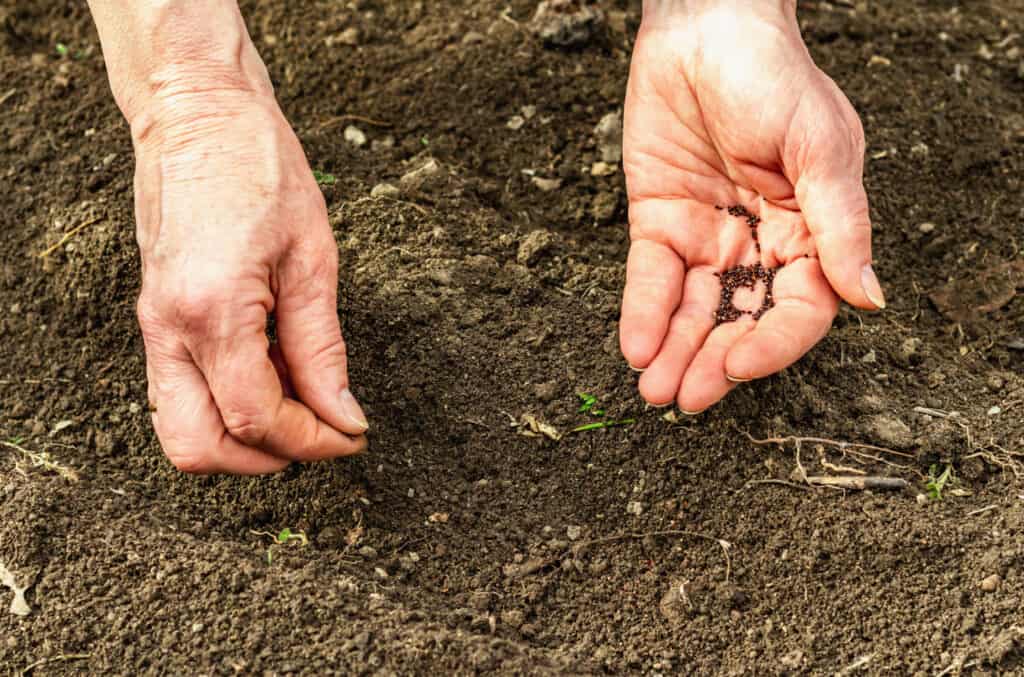
The temperature of the soil will make a difference in your planting time. Most plants thrive when the soil remains between 60 and 70 degrees, although some plants (like peas and spinach) will do fine in temperatures as cool as 45 degrees. You can use a soil thermometer to check the temperature of the soil before planting.
However, plants like eggplant and melons need soil that is at least 60 degrees. Be sure to check the recommended growing temperature for the plants you want to grow.
Some plants, like tomatoes, squash, and corn, are only planted once each growing season while other plants, like lettuce, peas, and beans can be planted early, harvested, and planted again.
How to Grow Resources:
Starter Vegetable Gardens, 2nd Edition: 24 No-Fail Plans for Small Organic Gardens


Tending Your Baby Food Garden
Once the seeds are planted, it’s important to keep the soil consistently moist to allow the seeds to germinate. Water daily, and in some cases, twice a day. This is especially important in warmer temperatures when the water evaporates quickly.
A rain gauge can help you track how much rain has fallen to help you determine how much more water your plants need. About an inch of water per week will help them thrive.
Different types of soil have various abilities to hold water so that will need to be accounted for. Adding compost to the soil though will help keep your plants properly hydrated.
The best way to gauge how moist the soil is, simply to stick your finger down in it. Don’t just touch the surface, but stick your finger about an inch or two down into the soil. It should feel slightly damp, like a sponge that’s been wrung out.
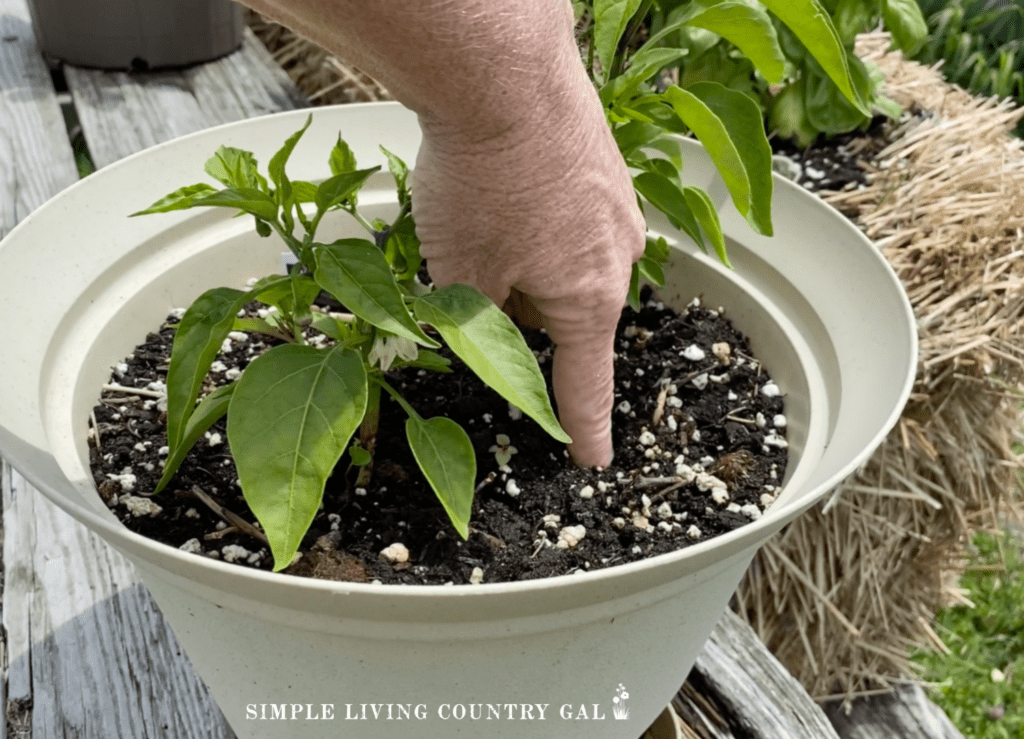
Hot weather will cause plants to wilt a little but this isn’t necessarily a sign that they need water. Checking the soil before watering will keep you from overwatering the plant. Be careful not to let the soil dry out completely, it can kill off the roots. Too much or too little water can also affect the taste of the plants.
You will need to fertilize your plants to keep them healthy and provide the biggest harvest. Organic fertilizer is best since the purpose of your garden is to grow healthy food for your baby.
Some plants will require a little extra support as they grow tall. A trellis or wooden supports will get the job done. Cucumbers and tomatoes will not only benefit from extra support, but will grow stronger and produce a bigger harvest with the help of a trellis or cage.
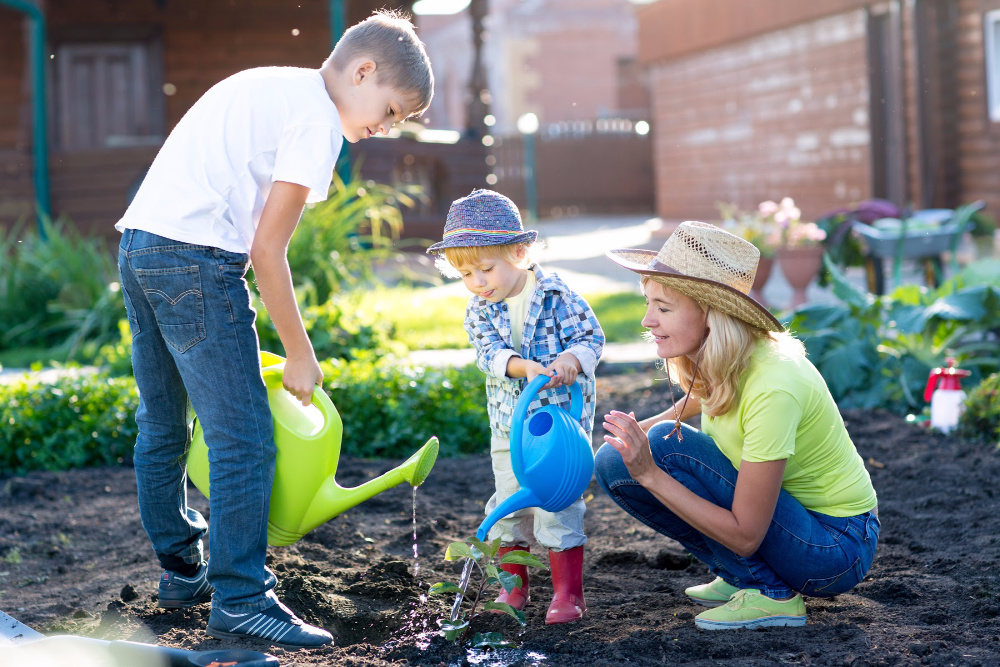
Plant Combinations For Homemade Babyfood
Some plants do well when planted together and others don’t. If you’re short on space, you may want to plant a few different types in one large pot or raised bed, but that may not provide the best produce.
Plants that are good together include:
- Beans, squash, and carrots
- Eggplant and beans
- Tomatoes, onions, and basil
- Lettuce and most herbs
- Spinach and onions
Plants that shouldn’t be planted together include:
- Beans or peas with either onions or garlic
- Carrots with fennel or fill
- Tomatoes or squash with potatoes
Planting a vegetable garden for homemade baby food is a great way to provide healthy, organic produce for your baby. Start small with a few plants that can be planted early in the season and replanted again later, like lettuce and peas.
This will help you get a feel for how plants grow in your containers or raised bed and how hard it will be to tend your garden daily. Once you feel comfortable with your first plants, you can start expanding our garden with a larger variety of plantings.
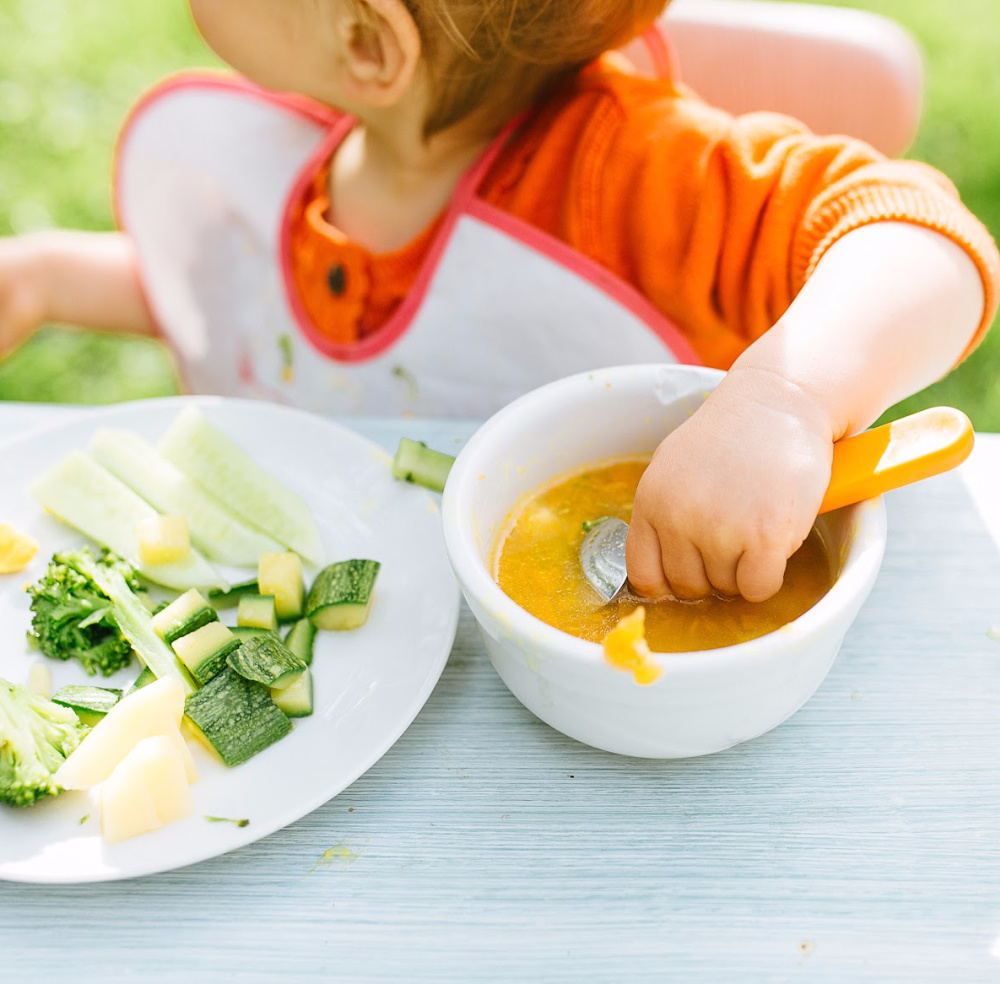
Your produce can be harvested, cleaned, cooked, and pureed to provide delicious baby food for your little one. Keep in mind, that fresh baby food is much more perishable than canned or jarred baby food. It should be consumed within a day or two of cooking. With this in mind, having a smaller garden that allows you to harvest a little at a time may be just the right solution for baby food.
Some tips for making baby food include using fresh produce at its peek to ensure all the wonderful vitamins are not lost. You will also need to know the best way to preserve foods being sure to freeze when that is preferred over canning.
Some produce can be cooked and frozen though so that you have healthy baby food available all year long. Be sure to research if the produce you’re growing will freeze well if that’s your intention.
LEARN HOW TO CAN YOUR OWN BABY FOOD!
Baby will be spoiled with delicious, healthy, home-grown food from mom. And you’ll feel good about what you’re feeding your baby. Even busy moms can manage a small container or raised bed garden. Planning, constructing, and planting can all be done within a weekend so that only daily watering and harvesting needs to be done to keep it up.
Gardening is taking all new shapes and forms today with themed gardens being incredibly popular right now. Start a baby food garden this season and fill your freezer and pantry with delicious and organic baby food your children will love.

![Gardening Hand Tool Set 3 Pack - MDSXO Heavy Duty Gardening Kit with Non-Slip Soft Ergonomic Handle, Great Garden Gift for Women Men[Stainless Steel]](https://m.media-amazon.com/images/I/41qgPIFVlJL._SL500_.jpg)










